Set Clear Goals. Drive Real Results.
How To Define Your Marketing Objectives
Once your brand and value proposition are in place, it's time to define your marketing objectives. These are the focused, measurable goals that turn your strategy into action. Whether you're aiming for more visibility, leads, or sales, clear objectives keep your efforts aligned and your progress on track.
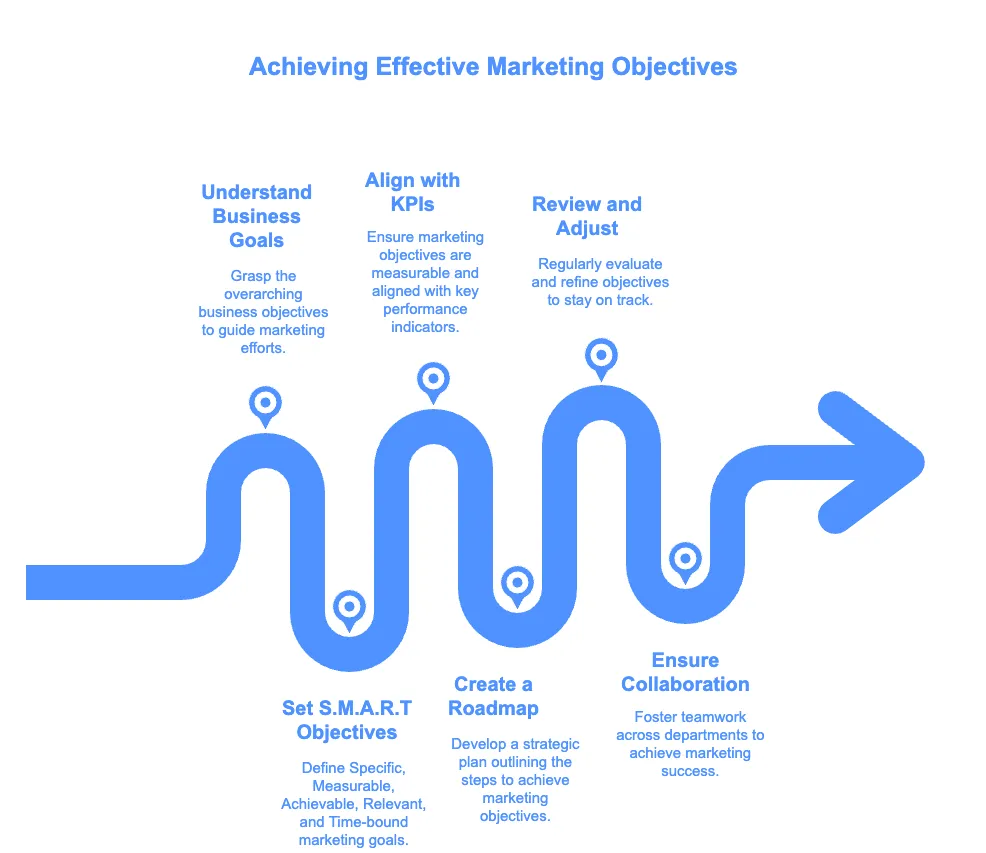
Why Define Your Marketing Objectives?
Defining your marketing objectives is critical for any business striving to achieve success. Clear marketing objectives allow you to focus on key initiatives that will drive the business forward and ensure alignment with your overall business goals.
Below you will find step-by-step guide on how to define your marketing objectives and align them with your business goals and KPIs. However, if you are looking for an easier to follow guide, here is a link to a marketing objective summary.
Step-by-step guide:
• Step 1: Understand The Business Goals
• Step 2: S.M.A.R.T Marketing Objectives
• Step 3: Align Marketing Objectives with KPIs
• Step 4: Create a Roadmap
• Step 5: Review and Adjust Objectives Regularly
• Step 6: Ensure Cross-Functional Collaboration
Step 1. Understand The Business Goals:
Before diving into marketing objectives, you need to understand your company's overall business goals.
BUSINESS GOALS COULD BE RELATED TO ANY OF THE FOLLOWING:
REVENUE GROWTH:
Increasing sales by a specific percentage.
MARKET PENETRATION:
Expanding into a new market or gaining a larger market share in an existing one.
CUSTOMER RETENTION:
Enhancing customer loyalty and repeat business.
BRAND AWARENESS:
Increasing visibility and recognition in a specific demographic or region.
PRODUCT DEVELOPMENT:
Launching new products or improving existing ones.
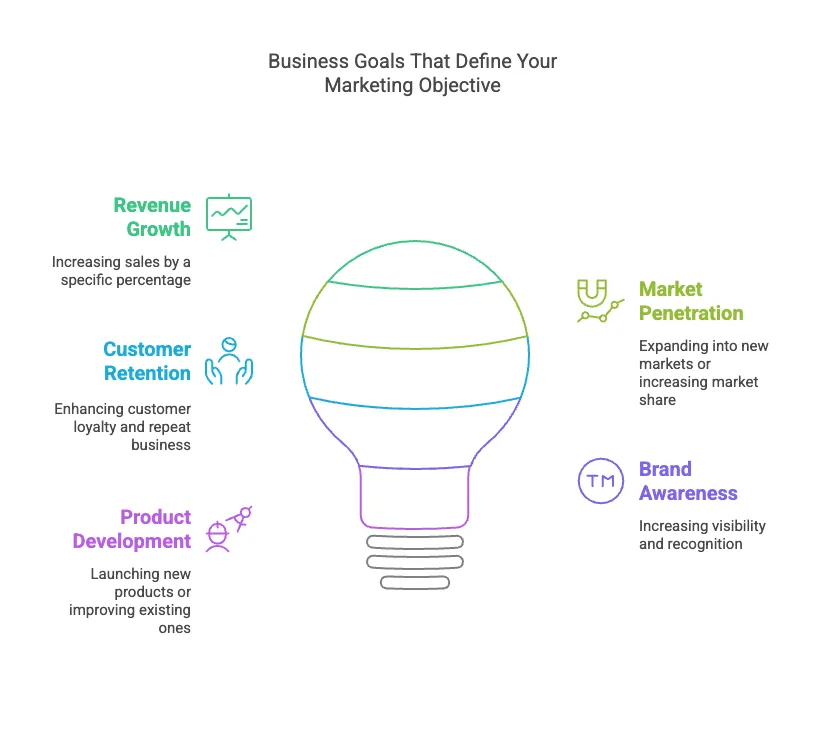
Step 2. S.M.A.R.T. Marketing Objectives
Once the business goals are clear, translate them into SMART (Specific, Measurable, Achievable, Relevant, Time-bound) marketing objectives.
SHORT-TERM MARKETING OBJECTIVES
This framework ensures that your objectives are clear, achievable, and measurable over time.
DURATION
Typically 3 to 12 months.
FOCUS
These are tactical, campaign-specific objectives meant to drive quick wins or build momentum. They should contribute directly to the business's immediate needs.
EXAMPLES OF SHORT-TERM MARKETING OBJECTIVES
• Increase website traffic by 20% over the next 6 months.
• Generate 500 new leads within 3 months through a new content marketing strategy.
• Achieve a 10% increase in email marketing click-through rates within 3 months.
ALIGNMENT
If your business goal is to increase revenue by 10%, your short-term objective could be to increase lead generation by 15% within 6 months, which directly impacts sales growth.
LONG-TERM MARKETING OBJECTIVES
This framework ensures that your objectives are clear, achievable, and measurable over time.
DURATION
Typically 1 to 5 years.
FOCUS
These are broader, strategic goals aimed at achieving sustained growth and market leadership. Long-term objectives build upon the momentum gained from short-term wins.
EXAMPLES OF LONG-TERM MARKETING OBJECTIVES:
• Achieve 30% overall revenue growth over the next 3 years through diversified digital marketing channels.
• Grow brand awareness in a new market by 50% within 2 years.
• Establish the company as a thought leader in the industry by increasing organic search rankings for 10 key terms within 2 years.
ALIGNMENT
For instance, if the business goal is to expand into new geographic markets over the next 5 years, your long-term marketing objective might involve building brand awareness and generating leads in those new regions..
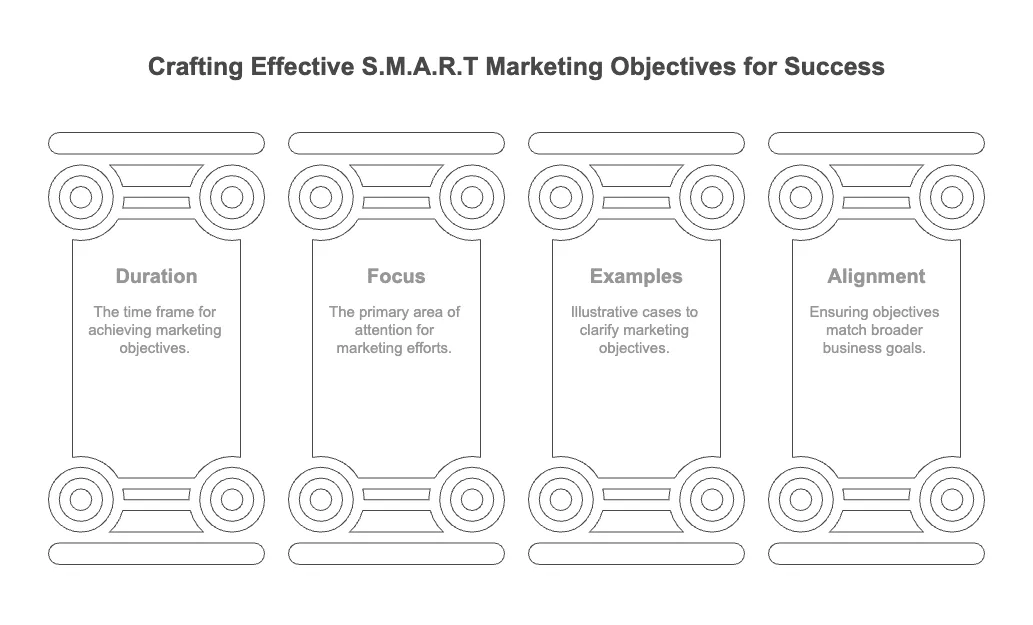
Step 3. Align Marketing Objectives with KPIs:
Once objectives are set, identify the Key Performance Indicators (KPIs) that will help track the success of each objective. KPIs are specific metrics that serve as performance benchmarks.
KPI FOR SHORT-TERM MARKETING OBJECTIVES
These should be campaign-specific and granular
Website traffic (Google Analytics)
Conversion rate (Landing page analytics)
Cost per lead (CPL)
Click-through rate (CTR)
EXAMPLE
If the short-term goal is to generate 500 new leads in 3 months, the KPIs might include CPL, website traffic, and lead form conversion rate.
KPI FOR LONG-TERM MARKETING OBJECTIVES
These are broader and might involve growth trends or more comprehensive data.
Customer lifetime value (CLV)
Market share percentage
Brand sentiment/awareness (e.g., through surveys or media mentions)
Customer retention rate
Return on investment (ROI) from marketing campaigns
EXAMPLE
If the long-term goal is to increase market share by 15% in 3 years, KPIs could involve tracking brand awareness growth, lead conversion, and overall sales in the target market.
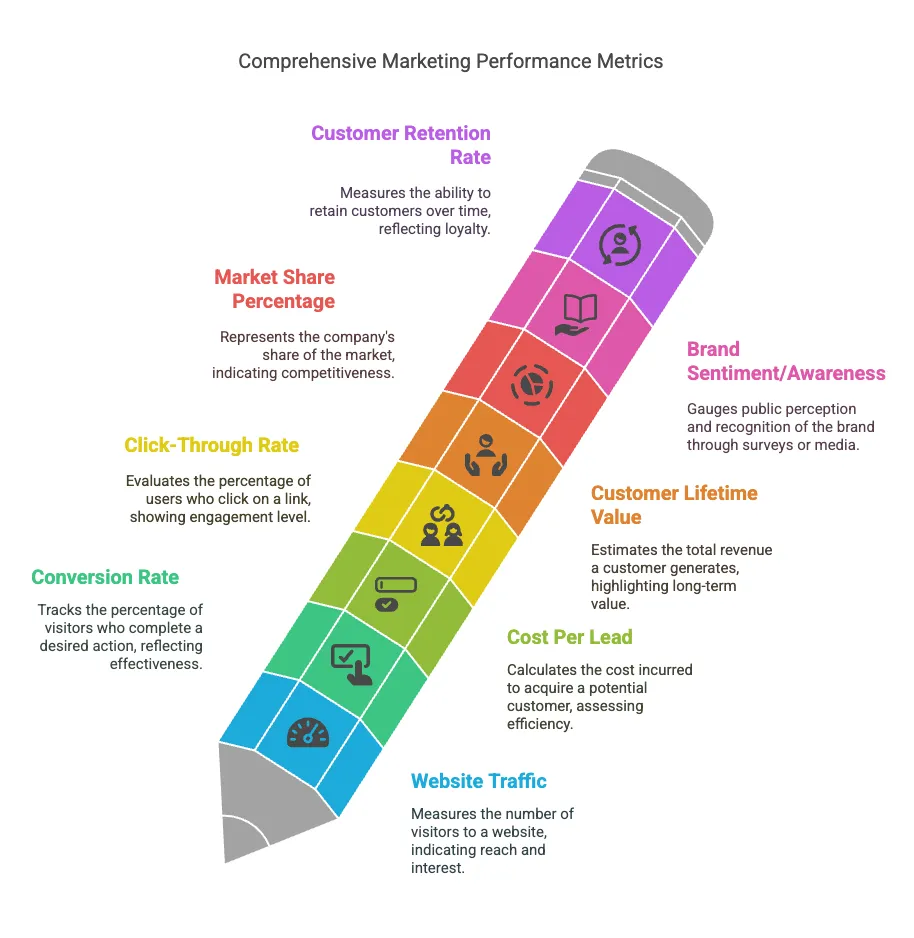
Step 4. Create a Roadmap:
With objectives and KPIs in place, create a clear roadmap that outlines how short-term efforts will feed into long-term goals.
SHORT-TERM ROADMAP
This might include specific campaigns, budget allocations, and immediate deadlines for achieving objectives like increasing leads or boosting website traffic.
LONG-TERM ROADMAP
This should integrate broader initiatives, such as investing in SEO for long-term organic growth or nurturing partnerships with influencers or affiliates over several years.
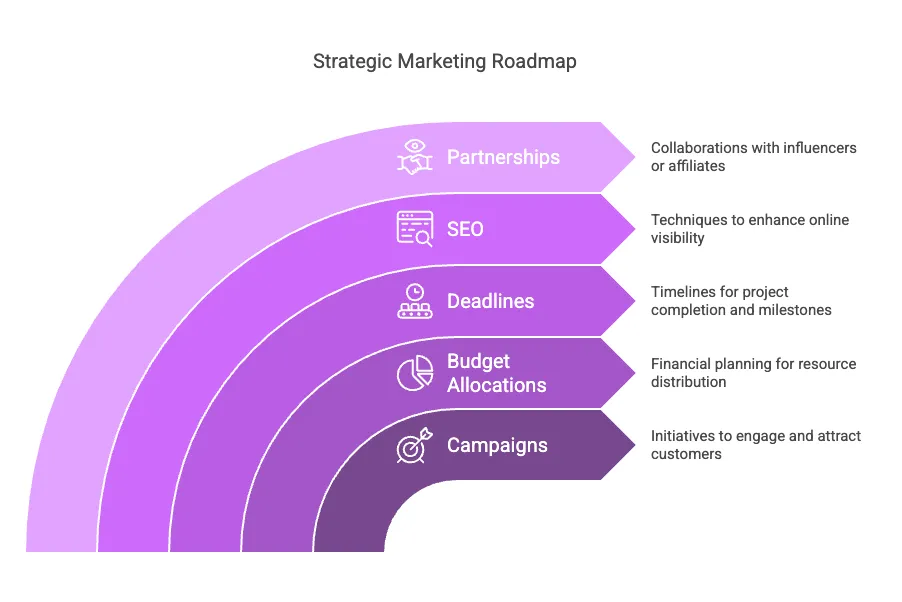
Step 5. Review and Adjust Objectives Regularly:
Both short-term and long-term marketing objectives should not be static. Regularly reviewing progress against your KPIs ensures you stay on track. Evaluate whether you need to adjust strategies, reallocate budgets, or shift focus based on performance data.
SHORT-TERM ADJUSTMENTS
Frequently track and evaluate KPIs to ensure campaigns are performing as expected. If they aren’t, pivot quickly to optimize performance.
LONG-TERM ADJUSTMENTS
While less frequent, long-term objectives may need adjustments based on changes in the market, competition, or internal business priorities. Regular reviews every quarter or year can help ensure continued alignment.
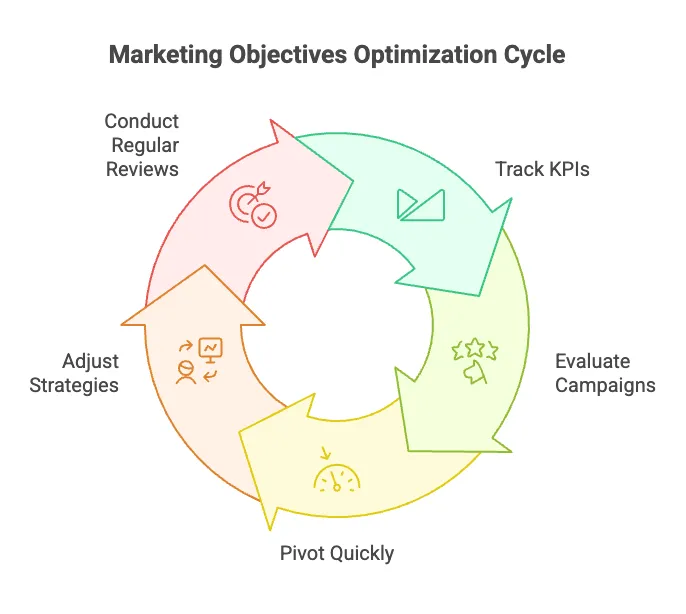
Step 6. Ensure Cross-Functional Collaboration
Marketing should never work in isolation. Collaboration with sales, customer service, and product teams ensures that marketing objectives are fully aligned with broader business objectives. Make sure all teams are aware of your objectives, how they tie into the business goals, and what KPIs will measure success.
SALES ALIGNMENT:
Make sure marketing objectives like lead generation match sales targets.
PRODUCT DEVELOPMENT:
Align product promotions and campaigns with product launch schedules and updates.
CUSTOMER SERVICE:
Align marketing messages with customer feedback and service improvements.
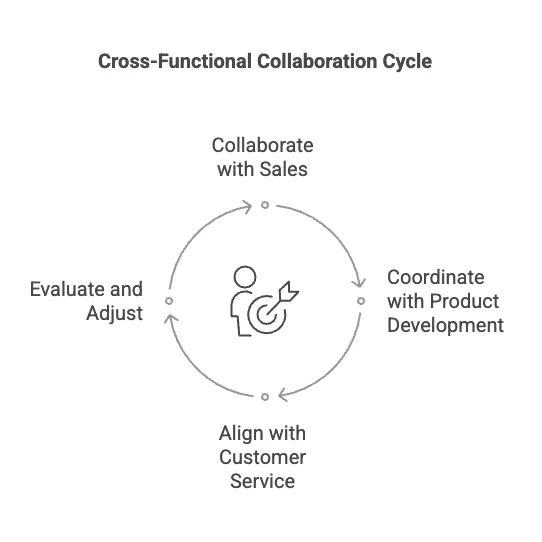
Want to know more? Let's Talk!
I’d love to meet you, hear about what you’re working on, and see how I can help support you.

Facebook
LinkedIn